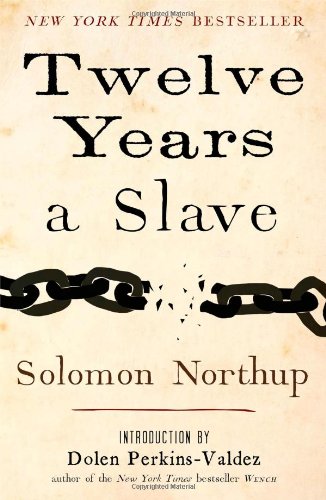Tale of slavery is haunting

“Twelve Years a Slave,” by Solomon Northup
—
A little over 30 years old, in the year 1841, Solomon Northup, born a freeman in Saratoga, New York, is kidnapnapped and sold into slavery in the south.
Prior to being enslaved, he is a loving father and husband and son of a former Rhode Island slave. Solomon’s father was owned by a man with the surname Northup, Mintus Northup, and Solomon’s father was freed upon the execution of Mintus Northup’s will.
The book is a first person narrative of Solomon’s time in slavery. He describes his experiences from the first slave pen he is confined in to the end of his enslavement when he is known as Platt. As Platt, he works for a man who was evil incarnate. The reader follows Solomon on an emotional journey of desperation, with glimmers of hope for escape or discovery along the way all being extinguished until finally at the end of his enslavement, a lawyer named Henry Northup, a relative of Mintus Northup, locates Solomon and obtains his freedom.
While the narrative could have been finished there, instead it gives a final warning of oppression when the justice system turns against Solomon and he is charged with defrauding the original slave trader who sold him.
When I was a young girl, not much older than Solomon’s oldest daughter when he was captured, my aunt gave me a piece of wisdom.
“Be careful what you might see,” she said, “because you will never be able to unsee it.”
She might have said, “Be careful what you read.” Because in the case of “Twelve Years a Slave,” I have been stuck with this story in my mind. I have been unable to get rid of the haunting narrative. Recently, I read the story again and although it has been reviewed previously (back in the fall of 2012 by Richard Frost,) the editors agreed that it is such an important book, it should be discussed again.
The writing is easy to read. The vocabulary and diction of the mid-1800s is not so different from today, although it is striking that an individual with an elementary education could create this narrative. (Striking when one compares what an 8th grader might be able to write today.) But the true value is how it prods a reader into self-reflection.
In fact, this book should be required reading for humanity. Anyone reading about the anguish a mother feels when her children are separated from her and sold at auction would pause a moment before separating children from parents in any situation. The reader is forced to consider that although this book was written after the document outlining inalienable rights, some humans were not considered human enough to have those rights, specifically, women and slaves. Just a small thought later, a reader must wonder if there are populations now that we enslave or believe do not deserve inalienable rights.
Slavery still exists, worldwide in the form that Solomon suffered from, and expanded in other variations: child labor, forced marriages, and in our own country as “modern” slavery, specifically human trafficking and some immigrant labor camps.
“Twelve Years a Slave” is a powerful narrative that makes a reader confront the fact that there is right and wrong in the world; good and evil still coexist. And like the experience one will have after reading the book, we cannot close the cover of our lives and ignore humanity’s plight. Once we see it, we cannot unsee it. All we can do is choose how to respond.


